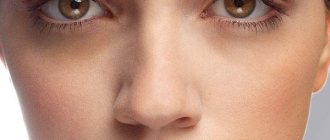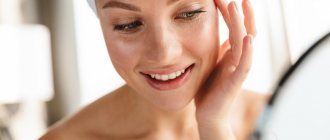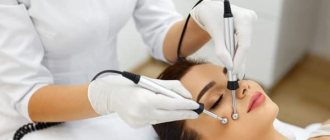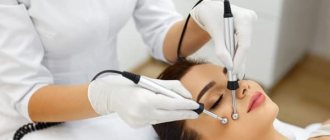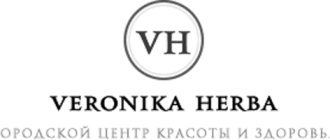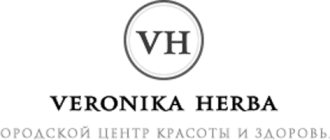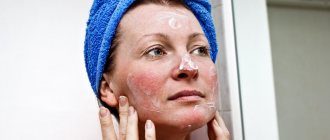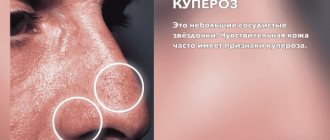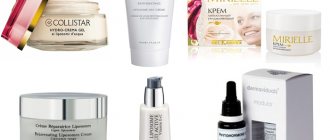Lymphatic drainage is a physiotherapeutic procedure during which excess fluid and toxins are removed from the body. Pressotherapy is an innovative procedure that is performed at the Yusupov Hospital using modern devices from leading companies in the world. Osteopathic lymphatic drainage differs from other techniques in that the depth and extent of the effect on the tissue is determined by the tissues themselves and their condition.
Rehabilitation specialists perform manual lymphatic drainage to improve the outflow of venous blood and lymphatic fluid. The specialists of the rehabilitation clinic have been trained in leading rehabilitation centers in Europe. They are fluent in all types of lymphatic drainage techniques. Pressotherapy and lymphatic drainage are used in combination with drug treatment and other types of rehabilitation therapy. Reviews about the procedures are positive.
Indications and contraindications for performing lymphatic drainage
Lymphatic drainage is performed if the following indications exist:
- varicose veins of the lower extremities in remission;
- lymphedema;
- cerebrovascular accident;
- obesity;
- cellulite;
- decreased elasticity, sagging, skin aging.
Lymphatic drainage of the legs is performed after consultation with a phlebologist. It helps improve the functioning of venous valves, increasing the tone of blood and lymphatic vessels. After a session of pneumomassage, the pain in the legs goes away and swelling disappears. For varicose veins of the lower extremities, procedures are carried out once a week.
Rehabilitation specialists at the Yusupov Hospital approach lymphatic drainage with the utmost caution. Hardware drainage is not performed if the following contraindications are present:
- acute inflammatory processes on the skin caused by infectious agents (viruses, bacteria);
- swelling due to weakness of the heart muscle;
- violation of the integrity of the skin in the area of lymphatic drainage
- fungal skin and vaginal diseases;
- malignant neoplasms of any location.
Contraindications to lymphatic drainage are tuberculosis, diabetes mellitus, bronchial asthma, and chronic renal failure. The procedure is not performed after vagotomy surgery, if there is a tendency to thrombus formation, or during pregnancy. Lymphatic drainage of the face and neck area is contraindicated in case of disruption of the heart muscle, the presence of arrhythmia, or diseases of the thyroid gland. Lymphatic drainage of the abdomen is not performed during pregnancy and breastfeeding, if there is a tendency to uterine bleeding, or during menstruation. Susceptibility to epileptic seizures, the presence of fragile blood vessels, acute venous thrombosis and thrombophlebitis are contraindications to lymphatic drainage.
Hardware lymphatic drainage
Pressotherapy, or compression massage, eliminates lymph stagnation. The procedure involves sequential compression of various parts of the body using specially designed cuffs into which compressed air is supplied. The cuffs consist of sequentially located compartments. The sequence of pumping the compartments with air and the amount of air pressure in them determines the nature of the procedure - press massage or lymphatic drainage. During the procedure, blood circulation improves in the capillaries of the skin and soft tissues that are in close proximity to them, cleansing occurs and skin nutrition improves. Hardware lymphatic drainage is a reliable method of mechanical influence on subcutaneous tissue.
Pressotherapy has a profound healing effect on the body. It is based on two main mechanisms: physiological tissue drainage and the healing effects of massage. After a course of procedures, the patient gets rid of edema of various origins, and the volume of body parts decreases. Pressotherapy helps restore water balance due to the normalization of lymph and intercellular fluid circulation. This improves venous circulation and activates metabolic processes in skin cells and fat cells.
Rehabilitation specialists at the Yusupov Hospital use pressotherapy in the complex treatment of persistent muscle tension, lymphedema, and the prevention of varicose veins of the lower extremities. Lymphatic drainage of the lower extremities helps to actively combat postoperative and post-traumatic swelling. Special programs for the use of pressotherapy are used after liposuction.
The procedure for hardware lymphatic drainage involves using a compressor to pump air into special cuffs that are placed on the arms, legs, and waist. At the same time, the patient’s soft tissues are compressed in a wave-like manner, as a result of which blood circulation is activated. The special equipment used to perform pressotherapy produces certain rhythmic fluctuations in the pressure generated. The cyclical effect of pressure on certain parts of the human body helps remove excess fluid from tissues and stagnant metabolic products from the intercellular space. As a result, swelling is reduced and the walls of blood vessels are toned.
As the pressure in the cuffs decreases, the blood vessels dilate and blood flow increases. As a result of pneumomassage, the lymphatic system is activated, the body is actively cleansed of waste and toxins. Accelerated breakdown of fats and removal of breakdown products occurs, all metabolic processes in tissues at the cellular level are activated.
Pressotherapy is performed in a gentle manner. It is suitable for patients who have contraindications to performing lymphatic drainage by electrical stimulation of muscle tissue, ultrasound, electrophoresis or manual massage.
Lymphatic drainage. Lymphatic drainage mesotherapy.
Lymphatic drainage is a physiotherapeutic method of restoring venous circulation and normalizing lymph outflow, which involves removing excess fluid with metabolic products dissolved in it from the intercellular space.
Lymphatic drainage mesotherapy has a noticeable effect ; it improves metabolic processes in tissues, promotes the alignment of subcutaneous fatty tissue and rejuvenation.
The procedure consists of injections of lymphatic drainage cocktails. The drugs are injected into the deep layers of the skin and stimulate lymph flow. Normalizing lymph circulation helps eliminate fluid stagnation in tissues, remove toxins and activate skin immunity.
Indications:
- Cellulite at all its stages.
- Prevention and treatment in the early stages of varicose veins.
- Various inflammations that appear after damage to the skin or muscles as a result of a variety of injuries.
- Acne on the skin.
- Dysfunction of internal organs.
- Sluggish metabolism.
- The first signs of aging.
Contraindications:
- Weak blood vessels, tendency to form bruises and hematomas.
- Thrombophlebitis.
- Neoplasms of any location and nature, benign and malignant tumors.
- Inflammatory skin phenomena.
- Serious diseases of the heart and blood vessels.
- Thyroid diseases.
- Exacerbations of any chronic diseases.
The following preparations for the lymphatic drainage procedure are presented in the training:
- GAG complex Capyl
Application area:
- stimulation of microcirculation and CMT;
- in trichology;
- in cellulite therapy;
- in the treatment of stretch marks;
Compound:
- troxerutin is a semi-synthetic derivative of the flavonoid rutin. It has vasoprotective, anti-inflammatory, decongestant and antioxidant effects. One of the first phleboprotector drugs. Has P-vitamin activity. Participates in redox processes, blocks hyaluronidase, stabilizes hyaluronic acid in cell membranes, reduces the permeability and fragility of capillaries, and increases their tone. Increases the density of the vascular wall, reduces exudation of the liquid part of the plasma and diapedesis of blood cells. Reduces inflammation in the vascular wall, limiting the adhesion of platelets to its surface. Thus, rutin is the most active venotonic drug.
- plant extract of ginkgo biloba - has a pronounced antioxidant effect, improves the rheological properties of blood, reduces the fragility of the vascular wall, affects all three parts of microcirculation: capillaries, venules, arterioles.
- buffer system pH 7.0
Application area:
- capillary mesotherapy
- restoration of vascular elasticity
- cellulite therapy
- trichology
- rosacea therapy
- drainage/lymphatic drainage
Action of the drug:
- improves venous outflow;
- increases the tone of the capillary wall;
- stimulates oxygenation and trophism of tissues;
- restores the elasticity of venous vessels;
- improves the rheological properties of blood;
Recommendations for use:
- main cocktail course
- injection techniques: superficial or median nappage, fractional mesotherapy, dermaroller
- injection areas: paravertebral or along the vascular arch
- GAG complex DVL E
The drug has a drainage effect, activates the work of blood and lymph capillaries, tones the vascular wall, improves the rheological properties of blood, and eliminates congestion.
Applicable:
- In the complex therapy of hydrolipodystrophy.
- As a drainage agent.
- For the prevention and elimination of edema.
- In complex programs to improve microcirculation.
Compound:
Troxerutin, ginkgo biloba, yohimbine, artichoke, buffer system pH 7.0
The drug GAG Complex DVL E contains a complex of herbal ingredients and a vitamin P derivative - troxerutin. It has drainage and capillary-protective effects.
Yohimbine has a lipolytic effect and inhibits lipogenesis.
Recommended for use on the body.
- Ginkgo Biloba
Restores microcirculation, improves the rheological properties of blood, and has an antioxidant effect. Can be used for the treatment of rosacea.
Application area
- stimulation of microcirculation and CMT;
- rosacea therapy;
- solution to the problem of dark circles under the eyes.
Compound:
Ginkgo Biloba extract 2% - contains specific substances ginkgolides and bilobalides, which increase the elasticity of the vascular wall, have vasodilatory properties, suppress inflammatory reactions by inhibiting platelet activating factor (PAF), thereby preventing their aggregation.
buffer system pH 7.0 The drug has a pronounced rheologically active effect, helps improve microcirculation even with the development of reactive connective tissue fibrosis (in stages II and III of cellulite). It has pronounced antioxidant activity: it reduces the degree of lipid peroxidation, inhibits collagenase, preventing the destruction of collagen fibers.
Indications for use : in the treatment of rosacea, prevention of edema in the paraorbital zone.
- Artichoke
Detoxifying, lymphatic drainage, antioxidant effect.
Application area:
- cellulite;
- local fat deposits;
- post-traumatic edema;
Compound:
Artichoke extract (cinnarine) 2% is a powerful hepatoprotector. It contains active substances that protect liver cells from the effects of toxins (including nitro compounds, alkaloids, heavy metal salts, alcohol).
The extract also increases the production of coenzymes by hepatocytes and affects the metabolism of lipids, cholesterol and ketone bodies, and improves the antitoxic function of the liver. And it has a choleretic effect mainly due to the choleretic effect, has a diuretic effect and enhances the excretion of urea. Helps eliminate toxins and has a detoxifying effect.
Contains ascorbic acid, vitamins B1 and B2, inulin and a group of cinnamic acids, which help normalize metabolism in cells. Polyphenolic antioxidants effectively protect tissues and vascular endothelium from oxidative stress, increase the secretion of the vasodilator NO, which in turn stimulates drainage functions.
Cinnarine has a pronounced detoxifying and lymphatic drainage effect, promotes the removal of metabolic products, lipids, cholesterol and ketone bodies from cells.
Educational phone numbers : 8-812-248-99-34, 8-812-248-99-38, 8-812-243-91-63, 8-929-105-68-44
Application for ordering products here
Seminar schedule here
Manual lymphatic drainage with application of a compression bandage
Using manual lymphatic drainage, the rehabilitologist acts on the subcutaneous fat layer in order to enhance the drainage function of the lymphatic system. The procedure enhances the removal of lymph from the depot and transport through the lymphatic vessels, and activates the motility of the lymphatic vessels. Doctors at the Yusupov Hospital in the presence of lymphedema (lymphatic edema) perform manual lymphatic drainage with the application of compression stockings. The benefit of compression hosiery is to increase tissue pressure and enhance the work of the muscle pump. This helps improve the production and transport of lymph and venous return. The procedure increases the speed of blood flow, which is an effective prevention of thrombosis.
Thanks to manual lymphatic drainage with the application of a compression bandage, the permeability of the capillary wall for plasma proteins is significantly reduced, and the protein load is minimized. A compression bandage improves lymph transport processes. Contraindications to banding are acute thrombosis, erysipelas, severe arterial stenosis, as well as a number of other diseases and conditions that are determined by the doctor during consultation.
Manual lymphatic drainage with the application of a compression bandage at the Yusupov Hospital is a multi-layer bandage with an individual approach to each patient. The compression bandaging procedure, performed by specialists at the rehabilitation clinic, improves lymph outflow. The skin is preserved as much as possible when wearing a bandage. Rehabilitators protect the skin from abrasions, prevent squeezing, carefully monitor and treat existing or newly formed ulcers, cracks and other defects on the skin. For this purpose, individual pads are manufactured and used for bandaging.
According to the etiological factor, lymphedema is divided into primary and secondary:
- Primary lymphedema is associated with congenital, genetically determined, underdevelopment of the lymphatic system. Based on the time of manifestation, the following forms of lymphostasis are distinguished: Milroy's, Meidge's and Tarda's disease.
- Secondary lymphedema is a pathology caused by damage to normally developed lymphatic vessels. In the equatorial countries of Asia and Africa, the dominant cause of secondary lymphostasis is filariasis. In developed European countries, oncological pathology plays a leading role in the development of the disease. Moreover, impaired lymphatic drainage is caused both by the progress of the tumor process itself and by its treatment (radiation therapy, lymph node dissection). In modern practice, leading European lymphologists note an increase in the incidence of secondary lymphedema associated with morbid obesity. Lymphedema can also be caused by: severe chronic venous insufficiency, lipedema, severe mechanical and surgical injuries.
Vacuum lymphatic drainage
The purpose of vacuum lymphatic drainage is to accelerate the outflow of lymphatic fluid, cleanse the lymphatic pathways and remove toxins from the body. Vacuum lymphatic drainage affects the skin itself and subcutaneous fat. Under the influence of vacuum, drainage of intercellular spaces occurs. Fluid leaves the intercellular space into the lymphatic vessels. At the same time, the lymphatic and venous vessels dilate. In this case, the reverse flow of lymph and blood is blocked by valves. This leads to an increase in fluid exchange flow, increased metabolism and a decrease in tissue swelling.
Rehabilitation specialists at the Yusupov Hospital perform vacuum lymphatic drainage if there are the following indications:
- "heavy leg" syndrome;
- swelling;
- excess weight;
- local excess fat deposits.
Vacuum lymphatic drainage is included in all programs that are aimed at combating cellulite, obesity and reducing body volume. It is performed after the lipolysis procedure. The inclusion of vacuum lymphatic drainage in a patient rehabilitation program improves the results of plastic and reconstructive surgeries.
The procedure is safe, lasts 30-60 minutes, is easily tolerated by the patient, and has virtually no contraindications. The positive effect of vacuum lymphatic drainage is noticeable immediately. Already after the first procedure, you feel a surge of vigor, lightness in the body, and your mood improves. To achieve a lasting result, you need to undergo 5–10 procedures. A side effect of vacuum lymphatic drainage can be bruising. This is due to the individual characteristics of the patient (very thin capillary walls). Rehabilitation specialists at the Yusupov Hospital have extensive experience in performing vacuum drainage and select the optimal procedure parameters for each patient, which allows them to avoid unpleasant consequences.
Pros and cons of mesotherapy
This rejuvenation method has advantages and disadvantages. Let's consider the advantages of mesotherapy.
- Absolute safety. Cocktails are easily absorbed by the body, rejection is almost impossible. Among other things, they have a beneficial effect on the general condition of the patient: many note an influx of energy, vigor and positive emotions. There are almost no contraindications, the risk of side effects is reduced to zero.
- Painless. The thinnest needles are used for injections, and dosed administration takes very little time. If the patient has increased sensitivity, the doctor can reduce it with an anesthetic cream.
- There is no need to repeat the procedure every month. Since the result lasts for at least six months, the patient does not need to visit the clinic every month.
- No age limits. Due to the environmental friendliness and exceptional benefits of the drugs, facial mesotherapy is allowed for patients of all ages.
The disadvantages of mesotherapy are relative:
- Low risk of allergy to the needle. Since the drug is accepted by the body, rejection can only occur as a reaction to the needle penetrating the skin.
- Fear of injections. Not everyone is calm about injections; some have had a panicky fear of injections since childhood. It is morally difficult for such people to decide on injection mesotherapy.
- Formation of bruises. Sometimes patients complain of small bruises at the injection sites. Don't worry: everything will pass in 3-7 days.
- The danger of going to an inexperienced doctor. Due to the growing popularity of mesotherapy, many cosmetologists offer their services at competitive prices. Be careful: an attractive price usually hides unprofessionalism, which can lead to necrosis, infections and pain.
Lymphatic drainage using microcurrents
Microcurrents are used to improve microcirculation, eliminate swelling and improve the regenerative properties of the skin. Lymphatic drainage can be done at an affordable price at the Yusupov Hospital. During the procedure, specialists use special cosmetics that are saturated with vitamins, collagen, and amino acids, since microcurrents are excellent conductors that deliver substances deep into the skin.
Lymphatic drainage using microcurrents has the following effects:
- improves tone and strengthens blood vessels, removes stagnant fluid from tissues;
- has an anti-inflammatory effect and accelerates healing processes;
- restores muscle tone;
- accelerates the resorption of hematomas and edema.
Contraindications to microcurrent therapy are pregnancy, heart rhythm disturbances, the presence of gold threads, metal structures and pins in the bones, and malignant neoplasms. Before prescribing a procedure, rehabilitation specialists analyze the results of a comprehensive examination of the patient.
Types of lymphatic drainage facial massage
At the moment, there are several lymphatic drainage massage techniques, which are divided into two categories: manual and hardware. Often manual and hardware effects complement each other. For unsightly facial skin, experts prefer the manual technique of lymphatic drainage massage. Patients can master this method under the guidance of massage therapists at the Yusupov Hospital and then perform it independently every day for 10 minutes a day.
Hardware lymphatic drainage facial massage is carried out using galvanization and electroiontophoresis methods. At the Yusupov Hospital they do vacuum and microcurrent lymphatic drainage of the face. Galvanization is good because low-voltage current can activate metabolic processes in the skin and force it to get rid of excess fluid. During an electrophoresis session, moisturizing and stimulating substances are introduced into the skin using electrodes, and harmful chemical elements are released from the skin pores.
Vacuum hardware massage is based on the effect of negative pressure. This allows for increased lymph outflow. During this time, micro-tears of the epidermis may occur. Rehabilitation specialists at the Yusupov Hospital are fluent in this method of lymphatic drainage facial massage and prevent skin damage.
Microcurrent facial lymphatic drainage stimulates the upper layers of the skin. Weak electrical impulses (microcurrents) allow the facial muscles to contract and relax, bringing them to their natural state. This helps smooth out wrinkles around the lips and forehead.
